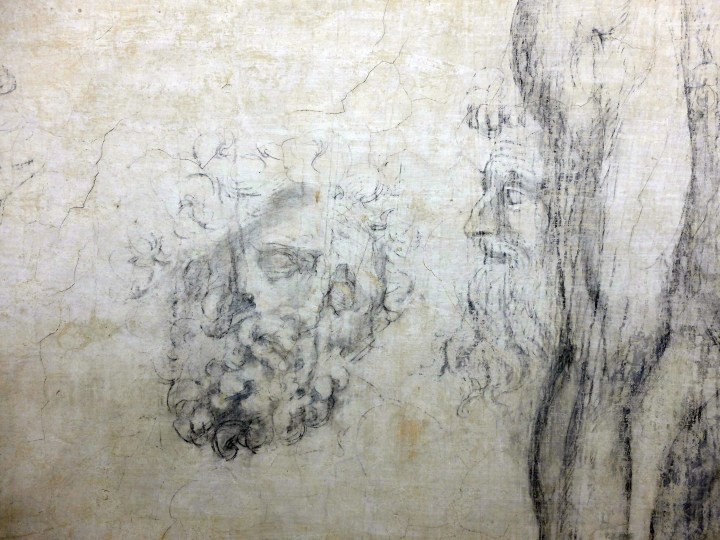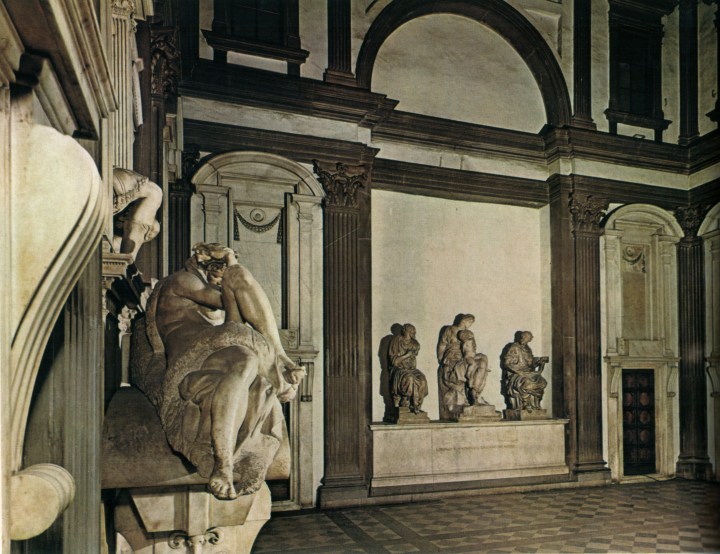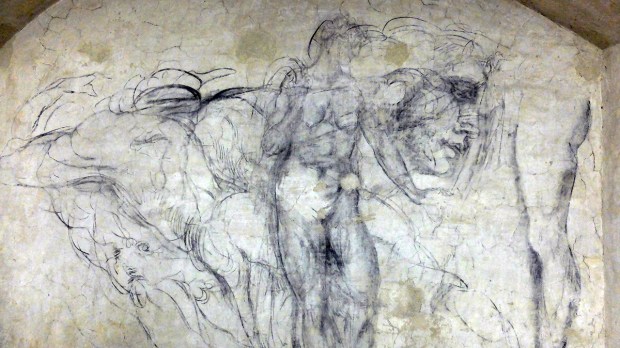A trip to Florence would be incomplete without a visit to the Basilica of San Lorenzo, the church that served as the official parish of the Medici family for centuries. Tucked between Santa Maria del Fiore and Santa Maria Novella, this masterpiece of Renaissance architecture hosts the remains of the Medicis as well as a treasure trove of artifacts from giants such as Donatello, who completed his masterpiece bronze sculpture “Pulpit of Passion” to ornament the church, Brunelleschi, who designed the old sacristy, and Michelangelo, who designed the Laurentian Library.
But not many of us may know that hidden inside the 500-year-old church lies a room that has puzzled art historians for years.
Discovered by Florentine curators in the 1970s, the 23 ft by 6 1/2 ft room, located below a wardrobe in the sacristy, contains a series of elaborate sketches on its thick stone walls. Art critics soon recognized some of the sketches as original work by Michelangelo. But why would the Renaissance master make drawings on the walls of a secret room inside one of Florence’s most high profile churches?

To solve this mystery we need to go back to the 1520s, when the Medicis hired Michelangelo to create sculptures that today adorn the family’s mausoleum inside the Basilica of San Lorenzo. The family was impressed by the master’s work, a series of nude statues representing allegories of different times of the day. But the idyllic relationship between the artist and his patrons came to an end in 1527 when Michelangelo took part in a revolt that pushed Florence’s rulers out of the city. For a few years the city was ruled by democratic and republican forces and Michelangelo even contributed to the design of a defensive wall intended to keep the Medici out. But in 1530, the Medicis, helped by Spanish troops, reconquered Florence where they held power, on and off, for the next two hundred years.

Michelangelo found himself in a risky position and, according to many historians, took refuge in a hidden room below the new sacristy of the Basilica of San Lorenzo. The room remained undiscovered for hundreds of years until, in 1975, a museum director in Florence noticed a trapdoor on the floor and decided to open it.
“You have to go down a series of very steep steps, and you start seeing all these drawings that are breathtaking,” Paola d’Agostino, director of the Bargello Museum that oversees the Medici Chapels, told NPR. Of the dozens of sketches and doodles, many have been traced back to Michelangelo while others remain a subject of debate, with some experts tracing them back to students of the master.

Some art historians question whether a figure like Michelangelo spent three years hidden inside a small room working in secrecy, while others find the story plausible. What’s certain is that even skeptical scholars agree that some of the doodles are the work of the Renaissance master including sketches of his sculpture “David” and drawings of Sistine Chapel subjects. The other doodles likely belonged to draftsmen, sculptors and painters who came to the church to study Michelangelo’s style.
Plans to open it to the public
For years the hidden room has been inaccessible to the public but the Bargello Museum planned to open it to the public in 2020. Covid delayed the plan, but it is very likely that in the near future visitors will be able to step into one of Florence’s best kept secrets and admire the hidden works of one of the masters of Catholic art.
And for those wondering what happened to Michelangelo, he was eventually pardoned by the Medici and could live freely in Florence for the rest of his days.

